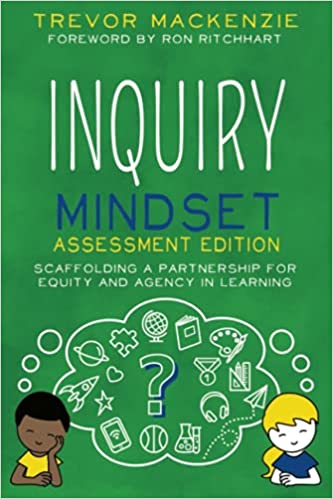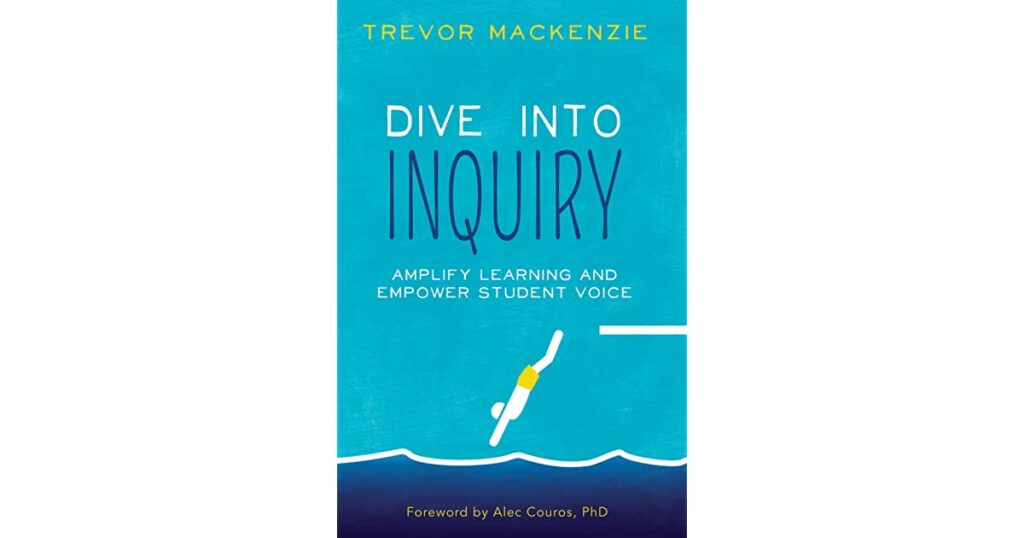Inquiry-based learning is not a new concept but is definitely one that is growing throughout the world. Inquiry is all about learning something new and is a “learning and teaching method that prioritizes student questions, ideas, and analyses” (Guido, 2017). Inquiry is about investigating an open question or problem and this can be done through case studies, group projects, research projects, fieldwork, or whatever other kind of activity you think would work.
There are 4 types of inquiry:
- Confirmation Inquiry
- The teacher gives the students a question, its answer and the method of reaching this answer.
- The students build investigation and critical-thinking skills and learn how the method works.
- Structured Inquiry
- The teacher gives the students an open question and an investigation method.
- The students use the method to craft an evidence-backed conclusion.
- Guided Inquiry
- The teacher gives the students an open question.
- The student’s design investigation methods to reach a conclusion.
- Open Inquiry
- The teacher gives time and support.
- The students create original questions that they investigate through their own methods and eventually present their results to discuss and expand.
5 characteristics of Inquiry-Based learning/teaching include (UTA Online, 2017):
- Process focus
- The main point of the project is to learn through the process and is not necessarily all about the product.
- Investigation
- Students learn how to investigate a variety of sources to find an answer.
- Group learning
- The students can work in pairs or small groups to find an answer.
- The students will also share their ideas and answers with the class at the end of their project.
- Discussion monitoring
- The teacher’s main role is to help students find answers to their question and also provide input/feedback on their progress throughout the project.
- Real-life application
- The students will think about how this solution can be utilized in their everyday life.
Some notes for teachers about inquiry-based learning (Isik-Ercan, 2020, p. 345):
- Building up to an open inquiry is crucial. By starting with something like a structured inquiry, the students are able to see the process that an inquiry should go through and they will be less overwhelmed than if you just asked them to do it all on their own for the first time.
- Preparing resources to support the students is also crucial. Have worksheets or guides they can use as they go along to help guide their learning and make sure they are finding all of the necessary information.
- Make sure that you are helping to guide the students with their inquiry to help sustain the quality of it.
This is a video that summarizes what inquiry-based learning is:
Another great resource that I encourage you to check out is Inquiry Mindset by Trevor MacKenzie and Rebecca Bathurst-Hunt (2018). In this book, they talk about how we can ensure all of our students experience a meaningful school experience. You will learn how to “empower your learners, increase engagement, and accelerate achievement. Harness the wonderings and curiosities of your students and leverage them into powerful learning opportunities. Adopt an inquiry approach that results in the most authentic and inspiring learning you’ve ever experienced” (MacKenzie & Bathurst-Hunt, 2018). They include a plethora of diagrams to help you visualize what he is explaining, which you can also use to show your students throughout the process. Trevor MacKenzie has also written Dive Into Inquiry (2016) and Inquiry Mindset: Assessment Edition (2021), which are both worth reading as well.
How Inquiry-Based Learning does not align with our chosen topic of brain breaks
Inquiry-based learning is about what is done during the learning process. Brain breaks are what is done to take a break from the learning process, in order to allow our brains to reset and get ready to focus on the task at hand again. Even though inquiry-based learning is supposed to be more engaging and easier for the students to find motivation in, that does not mean they will not need a break throughout the project. Brain breaks can be incorporated throughout the project, but are not necessarily aligned with inquiry-based learning specifically.
How Inquiry-Based Learning does or does not have a place within our learning resource
Does:
Inquiry-based learning is all about researching what you would like to learn more about. Within our learning resource, we are going to give the learners time to do their own research, as well as use the resources we have given them. They may have time to research a certain part of the topic and create their own conclusions in doing so.
Does not:
Within this project, the learners will only have approximately one to two hours to go through the resource. This does not allow enough time to complete a full inquiry, as they can take days or even months. Our learners will be encouraged to continue their learning and to continue asking questions and finding answers, but we will only be able to cover so much within our two-hour timeframe.
Overall, inquiry-based learning is a great tool for educators to use and should be used more. Unfortunately, we are not able to fully implement it into our learning resource, but we hope that our learners will still engage in some form of inquiry-based learning on their own.
References:
Guido, M. (2017, January 19). What is inquiry-based learning: 7 benefits & strategies you need to know. Prodigy Education. Retrieved from https://www.prodigygame.com/main-en/blog/inquiry-based-learning-definition-benefits-strategies/
Isik-Ercan, Z. (2020). ‘you have 25 kids playing around!’: Learning to implement inquiry-based science learning in an urban second-grade classroom. International Journal of Science Education, 42(3), 329-349. https://doi.org/10.1080/09500693.2019.1710874
MacKenzie, T., & Bathurst-Hunt, R. (2018). Inquiry mindset: Nurturing the dreams, wonders, and curiosities of our youngest learners. Elevate Books Edu.
Spencer, John (2017, December 5). What is inquiry-based learning? . YouTube. https://youtu.be/QlwkerwaV2E
UTA Online. (2017, September 8). How inquiry-based learning can work in a math classroom. UTA Online. Retrieved from https://academicpartnerships.uta.edu/articles/education/inquiry-based-learning-math-classroom.aspx


